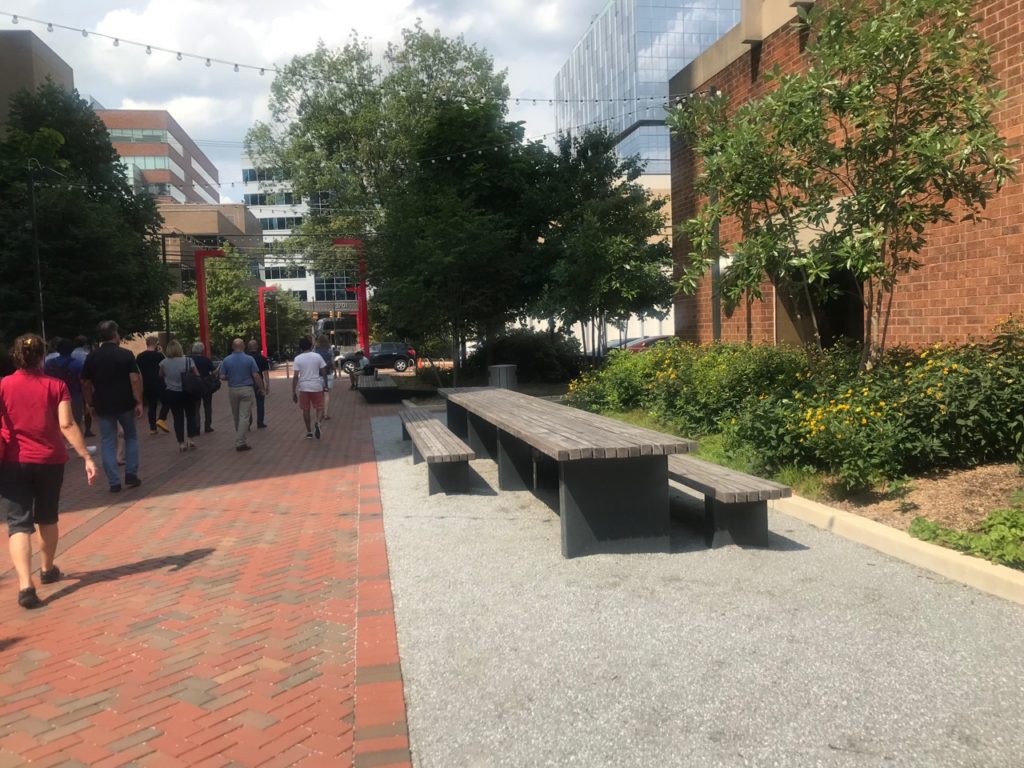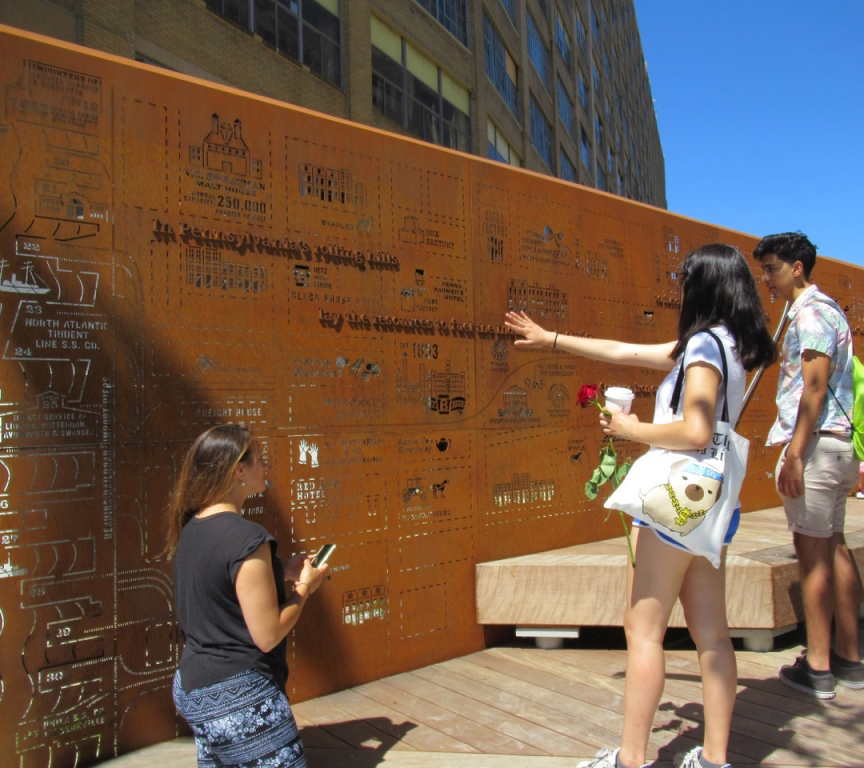Experience Design Insights from SEGD Wayfinding & Placemaking 2019
Posted November 14, 2019
My two-day visit to Philadelphia for the 2019 SEGD Wayfinding & Placemaking Conference included many of the classic attractions you might expect — Reading Terminal market and its abundance of cream cheese varieties and hanging signs, historic downtown, and new developments like Spruce Street Harbor Park and Cherry Street Pier. These sites coupled with the conference’s emphasis on community and shared experiences gave me a true appreciation for the city during my time at the conference, and of course, an overwhelming sense of brotherly love.

On day one, I visited some sites, arranged by SEGD, to see recent projects completed by local firms in Philadelphia’s creative community. I was particularly intrigued by the city’s own wayfinding system — a complex, ubiquitous color-coded network of compass-map hybrids that were seemingly ever-present, yet not intrusive. The digital ceiling by Bluecadet in the entryway of Lit Brothers store downtown stopped me in my tracks, as I was interested to see trends in interactive design among the local firms.

I also attended the Innovation Plaza tour. Initially, I was drawn to the formal design framework based on the golden section. But it was the emphasis on community-building that really hooked me. Located next to the University of Pennsylvania, this social space spans a couple blocks and gives neighbors who may not have otherwise mingled a chance to connect. The design includes a long table outside of the church on the east side of the Plaza, which Alan Jacobson of Exit Design explained, is meant for neighbors to share meals with one another, furthering the Plaza’s emphasis on bringing people together.
This strong respect for community ties carried into the talks SEGD hosted on day two of Wayfinding and Placemaking. One of my favorite talks was about Philadelphia’s Rail Park— a linear park similar to the High Line in New York — the park is meant to breathe new life into an urban area in need of greenery and shared outdoor space. The talk focused on a feature wall dedicated to the history of Philadelphia, adorned with icons based on the original logos and industries from local, historic businesses. The challenge of taking a wealth of visuals and reducing them into simple line art logos that could be cut into corten steel sounded thrilling. It made me consider how I could incorporate that sort of practice into my own work.

A talk by Katrin Middel of Polyform about rebranding the German city of Dessau also stood out to me, as the firm was faced with the challenge of respecting the Staatliches Bauhaus, a German art school operational from 1919 to 1933. The school is one of the city’s main attractions, but the city wishes to let Dessau be known for other destinations. The unification of each of the many sites spread out across a large area had to be done in a way that was visually cohesive — eye-catching but not an eyesore, present, but also disappearing. The firm came up with a really beautiful solution, a series of physical markers, each housed in a simple, modern framework in a welcoming shade of light blue, which popped visually and harmonized with its surroundings. This talk served as a great placemaking success story; by working closely with the community of Dessau, an effective and attractive solution was developed.
The framework of this SEGD Wayfinding and Placemaking event was innovative. By grouping speakers into geographic design communities across the world, the union of placemaking, place and community was further solidified. This emphasis on shared experiences with our neighbors has influenced my perspective on how a sense of unity can be the inspiration for great works of experiential graphic design. Thank you SEGD.


Join The Conversation